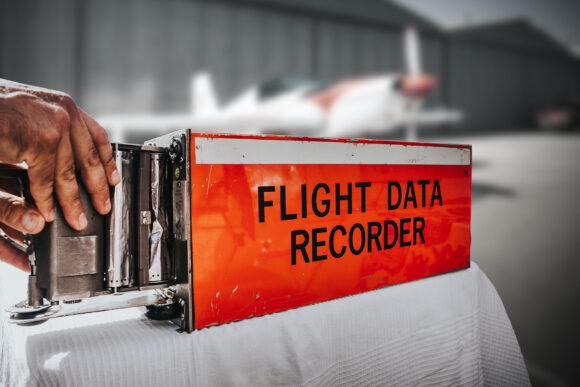WASHINGTON –– The cockpit voice recorder data on the Alaska Airlines Boeing 737 MAX 9 jet which lost a panel mid-flight on Friday was overwritten, U.S. authorities said, renewing attention on long-standing safety calls for longer in-flight recordings.
National Transportation Safety Board (NTSB) chair Jennifer Homendy said on Sunday no data was available on the cockpit voice recorder because it was not retrieved within two hours – when recording restarts, erasing previous data.
The U.S. requires cockpit voice recorders to log two hours of data versus 25 hours in Europe for planes made after 2021.
The industry has been wrestling with the length of cockpit recordings since the disappearance of a Malaysian jet in 2014.
Although the Boeing 777 has never been found, the loss of MH370 sharply increased efforts to monitor the longest possible modern flights and where necessary recap earlier flights.
In 2016, members of the United Nations’ aviation agency, the International Civil Aviation Organization (ICAO), recommended a 25-hour recording on planes manufactured from 2021, in line with the period of time already used for keeping flight data.
“There was a lot going on, on the flight deck and on the plane. It’s a very chaotic event. The circuit breaker for the CVR (cockpit voice recorder) was not pulled. The maintenance team went out to get it, but it was right at about the two-hour mark,” Homendy said.
The plane’s flight data recorder and cockpit voice recorder were sent to NTSB labs on Sunday to be read but no voice data was available, she said.
Debate With FAA
The NTSB has been vocal in calling for the U.S. to extend its rule to 25 hours. The U.S. Federal Aviation Administration (FAA) a month ago said it was proposing to extend to 25 hours – but only for new aircraft in line with the European policy.
“I’m calling on the FAA to change the rulemaking,” Homendy said, adding that she wanted to see aircraft retrofitted with 25-hour recorders, not just new planes.
“If that communication is not recorded, that is unfortunately a loss for us and a loss for the FAA and a loss for safety because that information is key not just for our investigation but for improving aviation safety,” she said.
Congress should take action in the FAA reauthorization bill to ensure the proposed rule is adopted, Homendy said.
The two agencies have sparred in the past over the way in which the NTSB’s recommendations are implemented.
Debate about whether to adopt the longer recording time juggles considerations of cost or privacy against safety.
The U.S. FAA has previously rejected the NTSB’s call for retrofitting aircraft with new cockpit voice recorders, saying the costs would be significant at $741 million versus $196 million under incremental upgrades it proposed.
Several pilot groups oppose longer recordings.
“(It) would significantly infringe upon the privacy rights of pilots and other flight crew members, as well as drastically increase the likelihood that CVR recordings will be misused or disseminated without authorization,” the union representing pilots for Atlas Air told the FAA last month.
The issue has taken on new urgency after a series of near miss incidents raised alarms about U.S. air safety. The NTSB has conducted 10 investigations since 2018 where the CVR was overwritten, including four runway incursions, Homendy said.
The comments came as Japanese media reported that the voice recorder from a Japan Airlines Airbus A350 that collided with a Japanese Coastguard plane last week had been recovered.
Some agencies have additionally called for video cockpit recordings, which most pilot groups oppose even more strongly because they could be used in courtrooms or unfairly leaked.
France’s BEA called for cockpit cameras to analyze what pilots are able to see following the mid-Atlantic crash of an Air France jet in 2009. Fifteen years on, litigation continues with appeals due to be heard in the second half next year.
Historians attribute the invention of flight recorders to Australian scientist David Warren in the 1950s.
They are mandatory and the aim is to preserve clues from sounds and data to help prevent future accidents.
The industry has already phased out older technology like wire, foil or reels of magnetic tape though the BEA keeps old equipment to ensure it can read data from old planes.
Although today’s recorders use computer chips inside “crash-survivable” containers able to withstand g-forces 3,400 times the feeling of gravity, critics say the capacity for recordings housed inside them remains less than an ordinary cellphone.
Was this article valuable?
Here are more articles you may enjoy.


 Singer’s Elliott Sued by PE Firm in Escalating Fight Over Money
Singer’s Elliott Sued by PE Firm in Escalating Fight Over Money  Musk’s xAI Faces California AG Probe Over Grok Sexual Images
Musk’s xAI Faces California AG Probe Over Grok Sexual Images  US Lawmaker Unveils Bill Requiring Manual Car-Door Releases
US Lawmaker Unveils Bill Requiring Manual Car-Door Releases  First Brands Judge Approves Examiner to Probe Fraud Allegations
First Brands Judge Approves Examiner to Probe Fraud Allegations 